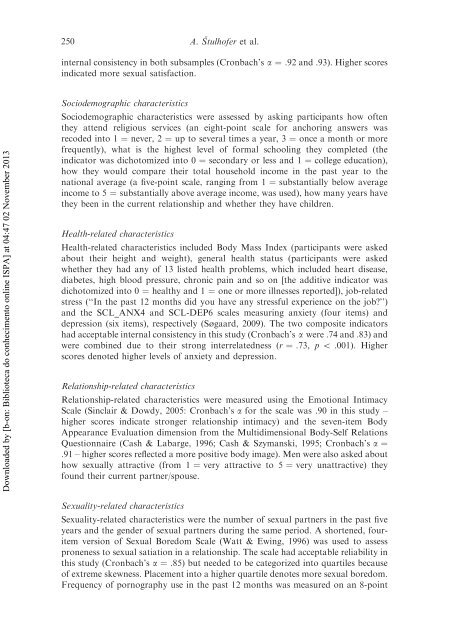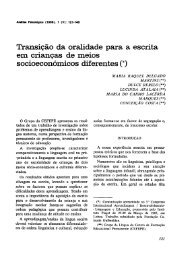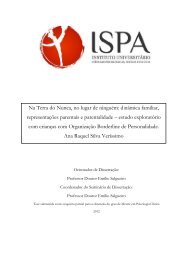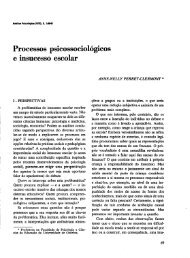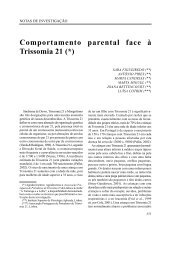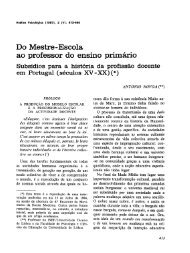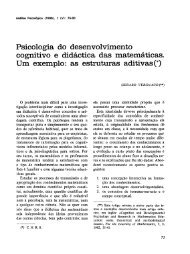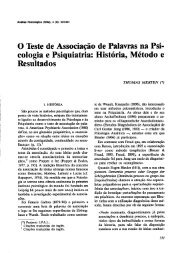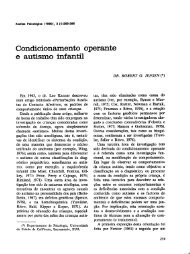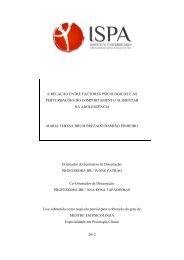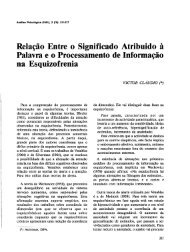Sexual and Relationship Therapy Is responsive sexual desire for ...
Sexual and Relationship Therapy Is responsive sexual desire for ...
Sexual and Relationship Therapy Is responsive sexual desire for ...
You also want an ePaper? Increase the reach of your titles
YUMPU automatically turns print PDFs into web optimized ePapers that Google loves.
250A. Sˇtulhofer et al.internal consistency in both subsamples (Cronbach’s a ¼ .92 <strong>and</strong> .93). Higher scoresindicated more <strong>sexual</strong> satisfaction.Downloaded by [b-on: Biblioteca do conhecimento online ISPA] at 04:47 02 November 2013Sociodemographic characteristicsSociodemographic characteristics were assessed by asking participants how oftenthey attend religious services (an eight-point scale <strong>for</strong> anchoring answers wasrecoded into 1 ¼ never, 2 ¼ up to several times a year, 3 ¼ once a month or morefrequently), what is the highest level of <strong>for</strong>mal schooling they completed (theindicator was dichotomized into 0 ¼ secondary or less <strong>and</strong> 1 ¼ college education),how they would compare their total household income in the past year to thenational average (a five-point scale, ranging from 1 ¼ substantially below averageincome to 5 ¼ substantially above average income, was used), how many years havethey been in the current relationship <strong>and</strong> whether they have children.Health-related characteristicsHealth-related characteristics included Body Mass Index (participants were askedabout their height <strong>and</strong> weight), general health status (participants were askedwhether they had any of 13 listed health problems, which included heart disease,diabetes, high blood pressure, chronic pain <strong>and</strong> so on [the additive indicator wasdichotomized into 0 ¼ healthy <strong>and</strong> 1 ¼ one or more illnesses reported]), job-relatedstress (‘‘In the past 12 months did you have any stressful experience on the job?’’)<strong>and</strong> the SCL_ANX4 <strong>and</strong> SCL-DEP6 scales measuring anxiety (four items) <strong>and</strong>depression (six items), respectively (Søgaard, 2009). The two composite indicatorshad acceptable internal consistency in this study (Cronbach’s a were .74 <strong>and</strong> .83) <strong>and</strong>were combined due to their strong interrelatedness (r ¼ .73, p 5 .001). Higherscores denoted higher levels of anxiety <strong>and</strong> depression.<strong>Relationship</strong>-related characteristics<strong>Relationship</strong>-related characteristics were measured using the Emotional IntimacyScale (Sinclair & Dowdy, 2005: Cronbach’s a <strong>for</strong> the scale was .90 in this study –higher scores indicate stronger relationship intimacy) <strong>and</strong> the seven-item BodyAppearance Evaluation dimension from the Multidimensional Body-Self RelationsQuestionnaire (Cash & Labarge, 1996; Cash & Szymanski, 1995; Cronbach’s a ¼.91 – higher scores reflected a more positive body image). Men were also asked abouthow <strong>sexual</strong>ly attractive (from 1 ¼ very attractive to 5 ¼ very unattractive) theyfound their current partner/spouse.<strong>Sexual</strong>ity-related characteristics<strong>Sexual</strong>ity-related characteristics were the number of <strong>sexual</strong> partners in the past fiveyears <strong>and</strong> the gender of <strong>sexual</strong> partners during the same period. A shortened, fouritemversion of <strong>Sexual</strong> Boredom Scale (Watt & Ewing, 1996) was used to assessproneness to <strong>sexual</strong> satiation in a relationship. The scale had acceptable reliability inthis study (Cronbach’s a ¼ .85) but needed to be categorized into quartiles becauseof extreme skewness. Placement into a higher quartile denotes more <strong>sexual</strong> boredom.Frequency of pornography use in the past 12 months was measured on an 8-point


